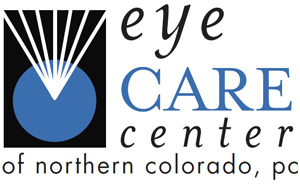Are you someone who wears glasses or contact lenses? Have you ever wondered about the significance of the numbers and abbreviations on your eye prescription? Initially, understanding your eye prescription may seem daunting, but once you grasp the key components, interpreting it becomes much simpler.
We will walk you through the steps of deciphering an eye prescription and assist you in comprehending the significance of each component. By the conclusion of this guide, you will be well-prepared to make informed choices regarding your eye care and select the appropriate corrective lenses for your vision requirements and how Eye Care Center of Northern Colorado can help you take care of your vision.
First things first, let’s go over some basic terms that you need to know:
- OD and OS: These stand for “oculus dexter” and “oculus sinister,” which are Latin terms for right eye and left eye, respectively.
- Sphere (SPH): This indicates the amount of nearsightedness (-) or farsightedness (+) you have. The number is measured in diopters (D). A negative number means you are nearsighted, while a positive number means you are farsighted.
- Cylinder (CYL): This measures the amount of astigmatism you have. Astigmatism occurs when the cornea is irregularly shaped, causing blurry vision. The cylinder number indicates the degree of astigmatism.
- Axis (AX): number, between 1 and 180, shows the orientation of astigmatism.
- Add: This is the additional magnifying power needed for reading or close-up tasks. It is usually found in bifocal or progressive lenses for presbyopia (age-related vision changes).
- PD (Pupillary Distance): This is the distance between your pupils, measured in millimeters. It is important to ensure that your lenses are centered correctly in your frames.
- Base: This refers to the positioning of the prism and instructs lens manufacturers on where to place the prism on your lenses. BU signifies base up, BD represents base down, BI denotes base in, and BO indicates base out.
- Prism: This denotes the level of power required to address alignment concerns in your vision.
Nearsighted vs. Farsighted: How to Tell the Difference
Nearsightedness
Nearsightedness, also known as myopia, is a common refractive error in which close objects can be seen clearly, but distant objects appear blurry. This condition occurs when the eyeball is too long or the cornea is too steep, causing light rays to focus in front of the retina instead of directly on it. Nearsighted individuals may have difficulty seeing distant objects such as road signs, chalkboards, or television screens.
Causes
The anatomy of your eye is responsible for this issue. If your eyeball is elongated or if the cornea, the outer protective layer of the eye, is excessively curved, the incoming light will not focus properly. Instead of focusing directly on the retina, which is the light-sensitive part of your eye, images will be focused in front of it, leading to blurred vision. This condition is known as a refractive error according to medical professionals.
Symptoms
- Blurred vision when looking at distant objects.
- Difficulty seeing road signs, chalkboards, or TV screens from a distance.
- Squinting to see clearly.
- Eye strain or fatigue, especially during activities that require focusing on distant objects.
- Headaches, particularly after prolonged periods of visual tasks.
- Difficulty recognizing faces or objects at a distance.
Farsightedness
Farsightedness, also known as hyperopia, is a common refractive error in which distant objects can be seen clearly, but close-up objects appear blurry. This condition occurs when the eyeball is too short or the cornea is too flat, causing light rays to focus behind the retina instead of directly on it.
Causes
In farsightedness, light rays do not focus correctly on the retina due to the eye being too short or the focusing power being weak, leading to blurry vision.
Symptoms
- Blurry vision when looking at close-up objects.
- Eyestrain or discomfort when performing close-up activities for extended periods.
- Headaches, particularly after engaging in tasks that demand near vision.
- Squinting to see clearly up close.
- Eye fatigue or strain.
Astigmatism
Astigmatism, a prevalent vision issue, is a result of an irregular corneal shape. It comes in two main types: corneal and lenticular. Corneal astigmatism is a defect in the cornea, while lenticular astigmatism is a lens distortion.
Astigmatism can be regular or irregular. Regular astigmatism occurs when the eye is not perfectly curved, leading to blurry vision. Irregular astigmatism, less common, involves uneven curvature, also causing blurred vision.
Causes
The exact cause of astigmatism is unknown, but genetics play a significant role. It can be present from birth or develop later in life, possibly due to eye injuries or surgery. Astigmatism often coexists with nearsightedness or farsightedness. In rare cases, keratoconus, a condition that affects the cornea, can lead to astigmatism. This condition causes thinning and bulging of the cornea, resulting in blurry vision and light sensitivity. While reading in low light does not cause astigmatism, it may exacerbate existing symptoms of blurriness in individuals with astigmatism.
Symptoms
- Blurry, distorted, or fuzzy vision at various distances, including both near and far.
- Difficulty seeing at night
- Eyestrain
- Headaches
- Squinting
- Sensitivity to light
Obtaining Your Prescription for Eyewear
We have optical departments at both our Longmont and Lafayette locations, where you can purchase glasses, sunglasses, and contacts with a current prescription. Our team can assist with adjustments, repairs, and provide contact lens samples to ensure the right fit before making a full purchase.
Ensure Your Eye Health with Routine Eye Examinations
Regular eye exams are essential as your prescription can change over time, especially during childhood and puberty. Lifestyle, injuries, and illnesses can impact vision changes into adulthood. At the Eye Care Center of Northern Colorado, we provide comprehensive eye exams and screenings, specializing in various eye conditions. We see patients 10 years and older, so feel free to discuss your prescription with us during your visit for the necessary guidance.

